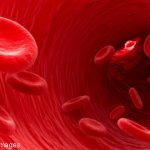The concept for OMERACT, or Outcome Measures in Rheumatology, was born from the American/European divide, with two of the authors (Drs. Boers and Tugwell) musing one evening on the fact that different outcome measures were used in rheumatoid arthritis (RA) clinical trials conducted on either side of the Atlantic. Several questions immediately came to mind: Why should different outcome measures exist? Could consensus be reached? Could a common set of measures be agreed on that would allow comparison between trials and use in meta-analyses?
The outcome of nearly 20 years of deliberation shows that striving for the “truth” in science can transcend those cultural and historic differences that can divide the world. OMERACTers can attest to the vigorous debates conducted at our conferences. Clearly, there is now a sense that consensus can be achieved on evidence presented and subjected to a fundamental screening process to ascertain utility. Thus, the OMERACT “filter” is an important guiding principle.
What Is the OMERACT Filter?
To be accepted as an OMERACT-endorsed outcome measure for use in a clinical trial, the measure must have been passed through the OMERACT filter in its intended setting.1 The filter has three component criteria: truth, discrimination, and feasibility. Each component criterion represents a question to be answered about that measure, in each of its intended settings.
- Truth: Is the measure truthful? Does it measure what it intends to measure? Is the result free of bias and is it clinically relevant? This criterion captures the issues of face, content, and criterion validity.
- Discrimination: Does the measure discriminate between situations that are of interest? These situations can be states at one time (for classification or progress) or states at different times (when measuring changes). This criterion captures the issues of reliability and sensitivity to change.
- Feasibility: Can the measure be applied easily, given the constraints of time, cost, and interpretability? This criterion addresses the practical reality of the use of the measure and is critical in determining the success (adoption) of the measure in the field.
TABLE 1
CONTENT
- Ankylosing spondylitis (AS)
- AS–reference case
- Connective tissue disease–Interstitial lung disease
- Fibromyalgia
- Gout outcome measures
- Hip and knee arthroplasty
- Low back pain
- Osteoarthritis
- Osteoporosis
- Psoriatic arthritis
- Remission in RA
- Systemic lupus erythematosus
- Systemic sclerosis
- Vasculitis
METHODS
- Computerized adaptive testing and item response theory
- Effective consumer
- Equity
- Fatigue
- Flares in RA
- Health economics
- International Classification of Functioning, Disability and Health Literacy
- MRI as an outcome measure in RA
- MRI of the cervical spine
- MRI in AS
- MRI in idiopathic arthritis
- Nonpharmalogical
- Patient perspective
- Psychosocial measures in musculoskeletal trials
- Reevaluating response in RA
- Responsiveness: Low disease activity
- Responsiveness: Minimal clinically important difference
- Responsiveness: Minimal clinically important improvement and patient acceptable symptom state
Safety
- Single joint response
- Soluble biomarkers
- Surrogate outcome
- Synovial tissue analysis in randomized controlled trials
- Total articular replacement criteria
- Ultrasound
- Work productivity
How Does OMERACT Work?
OMERACT has five executives, with members from Australasia, Europe, and North America. Over the past few years, we have established solid relationships with the European League Against Rheumatism (EULAR) and the ACR, both of whom now contribute to the effort by providing fellowships to allow young rheumatology researchers to attend OMERACT meetings. Representatives of these organizations sit on OMERACT’s Scientific Advisory Committee that meets twice a year and also includes clinical investigators and opinion leaders from around the globe.

